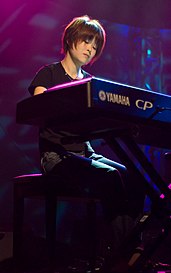Square Co., Ltd. was a Japanese video game development studio and publisher. It was founded in 1986 by Masafumi Miyamoto, who spun off part of his father's electronics company Den-Yu-Sha. Among its early employees were designers Hironobu Sakaguchi, Hiromichi Tanaka, Akitoshi Kawazu and Koichi Ishii, artist Kazuko Shibuya, programmer Nasir Gebelli, and composer Nobuo Uematsu. Initially focusing on action games, the team saw popular success with Final Fantasy in 1987. A role-playing video game, it became the first in a franchise of the same name. Later notable staff included directors Yoshinori Kitase and Takashi Tokita, designer and writer Yasumi Matsuno, artists Tetsuya Nomura and Yusuke Naora, and composers Yoko Shimomura and Masashi Hamauzu.

Final Fantasy IV, titled Final Fantasy II in its initial North American release, is a role-playing video game developed and published by Square for the Super Nintendo Entertainment System. Released in 1991, it is the fourth main installment of the Final Fantasy series. The game's story follows Cecil, a dark knight, as he tries to prevent the sorcerer Golbez from seizing powerful crystals and destroying the world. He is joined on this quest by a frequently changing group of allies. Final Fantasy IV introduced innovations that became staples of the Final Fantasy series and role-playing games in general. Its "Active Time Battle" system was used in five subsequent Final Fantasy games, and unlike prior games in the series, IV gave each character their own unchangeable character class — although at a few points in the story, a dark knight will choose the path of a paladin, or a summoner will evolve to a new tier of spellcasting.

SaGa (サガ) is a series of science fantasy role-playing video games by Square Enix. The series originated on the Game Boy in 1989 as the creation of Akitoshi Kawazu at Square. It has since continued across multiple platforms, from the Super NES to the PlayStation 2. The series is notable for its emphasis on open world exploration, non-linear branching plots, and occasionally unconventional gameplay. This distinguishes the games from most of Square's other franchises.

Final Fantasy Crystal Chronicles is an action role-playing video game developed by The Game Designers Studio and published by Nintendo for the GameCube. It was released in 2003 in Japan and 2004 in North America, Europe and Australia. A remastered version for Nintendo Switch, PlayStation 4, Android, and iOS was released in August 2020. A spin-off of the Final Fantasy series and beginning of the series of the same name, Crystal Chronicles was the first title in the franchise to be released for a Nintendo home console since Final Fantasy VI in 1994.
Final Fantasy is a media franchise created by Hironobu Sakaguchi and owned by Square Enix that includes video games, motion pictures, and other merchandise. The series began in 1987 as an eponymous role-playing video game developed by Square, spawning a video game series that became the central focus of the franchise. The music of the Final Fantasy series refers to the soundtracks of the Final Fantasy series of video games, as well as the surrounding medley of soundtrack, arranged, and compilation albums. The series' music ranges from very light background music to emotionally intense interweavings of character and situation leitmotifs.
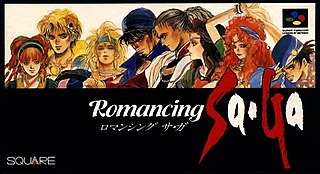
Romancing SaGa is a 1992 role-playing video game developed and published by Square for the Super Famicom. It is the fourth entry in the SaGa series. It was subsequently released for the WonderSwan Color in 2001 and mobile phones in 2009. A remake for the PlayStation 2, subtitled Minstrel Song in Japan, was released in both Japan and North America in 2005 by Square Enix. A remaster of Minstrel Song was released worldwide in 2022 for Android, iOS, Nintendo Switch, PlayStation 4, PlayStation 5 and Windows.

Kumi Tanioka is a Japanese composer and pianist. Born in Hiroshima, Japan, she graduated from Kobe University with a degree in musical performance, and began working as a video game composer in 1998. She joined video game developer and publisher Square that same year, and worked on over 15 games for them before leaving to work as an independent composer in 2010.

Akitoshi Kawazu is a Japanese game designer, director, producer and writer. After joining Square in 1985, he went on to become a central developer for the first two Final Fantasy titles, then acted as creator and lead developer for the SaGa series.

Romancing SaGa 2 is a 1993 role-playing video game developed and published by Square for the Super Famicom. It is the fifth entry in the SaGa series. It received an expanded port for Japanese mobile devices from Square Enix in 2011. This version was remastered by ArtePiazza and released worldwide between 2016 and 2017 by Square Enix for Android, iOS, PlayStation Vita, Nintendo Switch, PlayStation 4, Windows and Xbox One.

Final Fantasy Crystal Chronicles: The Crystal Bearers is an action-adventure game developed by Square Enix and released for Wii. It was released on November 12, 2009 in Japan and on December 26 in North America. The game received a mixed reception.

Final Fantasy Crystal Chronicles: Ring of Fates is an action role-playing game for the Nintendo DS, developed and published by Square Enix. It is a prequel to Final Fantasy Crystal Chronicles for the GameCube. The game takes advantage of both the local wireless and Wi-Fi capabilities of the system and features voice acting.
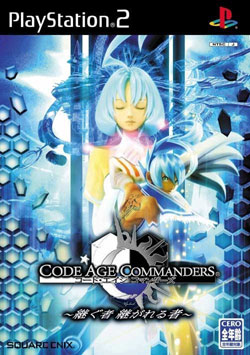
Code Age Commanders: Tsugu Mono Tsugareru Mono is a Japan-exclusive action role-playing game developed and published by Square Enix on October 13, 2005, for the PlayStation 2. It is part of the Code Age series, a franchise created by video game artist Yusuke Naora and designed to span different interweaved titles in multiple platforms and media. The series consists of Commanders, the mobile phone game Code Age Brawls, and the manga Code Age Archives. The story depicts the struggles of people surviving in a fictional "intraglobular world" menaced by an impending destruction, mysterious warped creatures, and different factions warring against each other. The game focuses successively on the viewpoints of four main protagonists.

Final Fantasy Fables: Chocobo's Dungeon is a 2007 role-playing video game published by Square Enix for the Wii. It is an installment in the Chocobo series that focuses on Chocobo and his quest to free a town lost in time from eternal forgetfulness. It is a loose sequel to Chocobo's Dungeon 2 on the PlayStation.

Final Fantasy Crystal Chronicles: My Life as a King is a video game developed for the WiiWare service of the Wii console by Square Enix. Square Enix decided to make a game for the WiiWare service that would be high profile, and it was decided that the game would be a simulation game and, later in development, a Final Fantasy title.
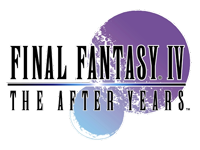
Final Fantasy IV: The After Years is an episodic role-playing video game co-developed by Matrix Software and Square Enix, as the sequel to the 1991 title Final Fantasy IV. Set 17 years after Final Fantasy IV, The After Years follows the original cast and their descendants in episodic tales as a new villain appears, setting into action a mysterious chain of events that threatens the fate of the Blue Planet. Largely utilizing assets, locations, and mechanics from its predecessor, the title incorporates higher quality character graphics and several new gameplay systems.
The Final Fantasy Crystal Chronicles video game series consists of Crystal Chronicles, a spin-off of the main Final Fantasy series, its sequels My Life as a King and My Life as a Darklord, and their spin-offs, Ring of Fates, Echoes of Time and The Crystal Bearers. Crystal Chronicles, Ring of Fates, and Echoes of Time have had released soundtrack albums to date, and Crystal Chronicles and Ring of Fates each have an associated single. Kumi Tanioka is the main composer for the series, having composed the three released soundtracks as well as the music for My Life as a King and My Life as a Darklord. Hidenori Iwasaki is filling that role for The Crystal Bearers. Nobuo Uematsu, the main composer for the regular Final Fantasy series, contributed one track to the Ring of Fates soundtrack. Yae and Donna Burke sang the Japanese and English versions of the theme song for Crystal Chronicles, respectively, while Aiko sang the theme song for Ring of Fates.
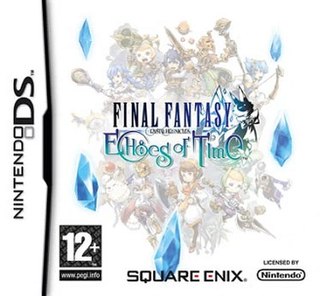
Final Fantasy Crystal Chronicles: Echoes of Time is a Wii and Nintendo DS action role-playing game in the Final Fantasy Crystal Chronicles series developed by Square Enix.

Final Fantasy Crystal Chronicles: My Life as a Darklord is a 2009 tower defense video game developed and published by Square Enix for the Wii and distributed through the WiiWare download service. The game is an entry in the Final Fantasy franchise, forming part of the Crystal Chronicles subseries. Taking place after Final Fantasy Crystal Chronicles: My Life as a King, the game follows the titular Darklord as she defends her mobile tower from waves of attacks as it travels across the kingdom.

